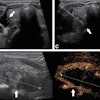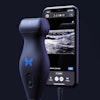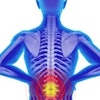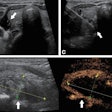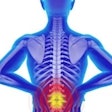
The COVID-19 pandemic drastically affected utilization of ultrasound exams performed by radiologists in the emergency department, according to research presented Wednesday at the virtual 2021 American Institute of Ultrasound in Medicine (AIUM) annual meeting.
Research presented at AIUM 2021 by Dr. Mark Messina from Montefiore Medical Center in New York City found decreases in the number of ultrasound exams performed, more exams performed on male patients, and an increase in the number of patients admitted to the hospital.
In the early days of the pandemic in the U.S., New York City was an epicenter for coronavirus cases. Confirmed deaths neared 600 per day in early April 2020 as emergency departments and hospitals became overwhelmed by patients with COVID-like symptoms.
At the same time, diagnostic testing at emergency departments declined dramatically for pathology not related to COVID-19 -- a decline that affected ultrasound use.
The retrospective study analyzed an eight-week period between March and May 2020, when COVID-19 deaths were peaking. The researchers found a number of changes between the time periods. They noted an overall decline in exam volume, and the percent of patients scanned who were subsequently admitted to the hospital grew by one-third. The percentage of male patients also increased.
| Ultrasound examinations before and during COVID pandemic | |||
| 2019 | 2020 | Percent change | |
| Total number of exams | 1,511 | 639 | -58% |
| Patients admitted to hospital | 86 | 114 | 33% |
| Percent of male patients | 18% | 28.3% | N/A |
Meanwhile, the number of female patients decreased in the study's time period from 525 to 458. The admission rate for female patients in 2020 was 14.9%, compared with 10.7% for 2019, a difference that was statistically significant. The difference in admission rates for male patients was not statistically significant.
There was no statistically significant difference in the number of deaths between 2020 and 2019, nor in the number of ultrasound exams that led to surgery or intervention in the emergency department or during hospitalization.
Messina said causes of the differences found in the study is "likely" due to efforts to reduce hospital utilization aside from COVID-19 patients, as well as decisions by healthcare providers on the appropriateness of diagnostic examinations in a period of pandemic. Fear of the virus also likely played a role.
What impact will the findings Messina presented at AIUM 2021 have on how hospital systems and governments respond to future epidemics and pandemics?
"Is there a definitive answer to how we can use this information to better healthcare? I don't think we know yet. I think it's going to take time to see when the world heals what changes will be made," Messina told AuntMinnie.com. "It will be exciting to see, because I think we'll be better for it. We've learned a lot."
Study limitations included not incorporating exams not performed by radiology, the time frame being in the early days of the pandemic, and the fact that vascular ultrasound was only performed in the radiology department at just one of the three hospitals utilized in the analysis.
"Our health system experienced a high volume of patients with COVID-19 infections during the timeframe used for analysis, which may limit the generalizability to other institutions," Messina said.
Messina also said the team has had talks with emergency department contacts for future collaboration, including adding data from point-of-care ultrasound to their findings.

